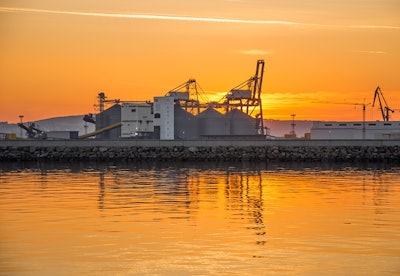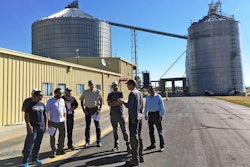
Deficits and surpluses, level playing fields, tariffs and duties. Trade — especially global agricultural trade — happens in a complex and sometimes contentious environment that is rarely as simple as the basic economic rules of supply and demand. Yet, working with the full scope of trade policy, market access and market development issues is essential to both short-term and long-term success for the U.S. grains industry
Trade is crucial
There is no doubt the United States has an abundant supply of coarse grains and value-added products available to meet the demands of a growing global middle class and world population. Production and price are critical building blocks to the distribution of these resources, cemented together with a mortar of market development efforts and trade agreements.
For example, the United States has 20 existing free trade agreements in place with countries representing just 10% of the global economy. Yet, trade through these agreements form the basis for nearly half of U.S. exports.
为了说明这一点,墨西哥马现在是最大的出口rket for U.S. corn, thanks to the favorable terms for agricultural trade in the North American Free Trade Agreement (NAFTA). Mexico purchased 524.4 million bushels of corn worth $2.5 billion last marketing year in addition to 23.86 million bushels of sorghum and more barley and distiller’s dried grains with solubles (DDGS) than any other country in the world.
The multiplying effects of trade are broader than any one commodity. Domestically, American real incomes are 9% higher (approximately $1.5 trillion in 2013 dollars) due to U.S. trade liberalizing efforts since World War II, according to the Peterson Institute for International Economics.
The effects of grain exports benefit not only agriculture, but also wholesale trade, real estate, oil and natural gas production and the banking and financial industries. In fact, every $1 in exports of grains and grain products generates an additional $3.23 in business sales across the United States, according to analysis conducted by Informa Economics.
Removing barriers to trade
Despite the advantages of trade, an increasing labyrinthine set of logistical networks, market constraints, domestic policies and international agreements often curtail the market development at the Council’s core and restrict export sales potential.
The most obvious barriers are financial — tariffs, duties or other trade-related charges. However, trade barriers can also include technical barriers like food safety regulations that purposefully or accidentally inhibit trade when not based on science or developed in accordance with established international standards.
The Council participates in trade policy negotiations to identify and minimize barriers to U.S. feed grains exports, expanding access for U.S. grain products. A classic example of this approach occurred in Colombia, where the implementation of a free trade agreement in 2012, combined with attractive pricing and aggressive trade servicing from USGC, helped U.S. farmers win back significant market share lost to Colombia’s trading partners in Mercosur, a South American trade agreement. USGC staff locally are laser-focused on not only short-term sales, but also long-term market development as this large market has enormous potential future demand.
Achieving market access is not always as straightforward as eliminating tariffs or establishing a quota for imports. Biotechnology approvals remain a barrier to trade in some parts of the world. The Council encourages adoption of policies that advance consistent, fair, rules-based systems for trade and encourage the acceptance of agricultural biotechnology, including by facilitating MAIZALL, an alliance of U.S., Brazilian and Argentine corn farmers. In this trade policy area, rapid response can make the difference in sales. For example, South Africa experienced a severe drought last year that necessitated corn imports. Council staff, locally and in the United States, helped provide information and make connections between governments to secure outstanding biotech approvals and allow U.S. corn to fill that demand.
Trade agreements, whether through a specific bilateral agreement or larger efforts at the World Trade Organization (WTO), can set the rules for market access, approval processes as well as how to handle trade disputes and disruptions. The WTO’s Trade Facilitation Agreement (TFA) successfully entered into force earlier this year to put into place more transparent and uniform trade procedures for WTO members that will help cut red tape like unclear customs fees, slow border release times or duplicative documentation requirements, which add cost quickly.
Even with such agreements in place, however, the Council must work on behalf of U.S. agriculture with the U.S. Trade Representative and domestic partners to ensure foreign governments that do not play the agreed-upon rules are not given an advantage over U.S. workers and businesses. For example, the Council played a key role in the U.S. ethanol and DDGS industry’s defense against anti-dumping and countervailing duties investigations by China. This coordination was essential to the industry being represented well throughout the proceedings in China and keeping the U.S. industry informed.
The ultimate goal of these wide priorities is opening the door for market development activities to capture demand through providing customers better information, offering expertise, helping with demonstration projects like feeding trials and many other activities.
Fueling action on trade at home
While communication and negotiation are essential to maintaining or improving market access with trading partners, providing information to domestic stakeholders about the status of trade access is also a critical part of building new markets.
The Council benefits from a very diverse membership of farmers and agribusiness representatives, representing the breadth and depth of the U.S. grain value chain. These active participants in Council programs help identify issues, provide critical information and implement solutions. In this way, the Council serves a role as conduit between U.S. grain producers and exporters and the U.S. government as well as overseas regulators and industry participants.
2016年选举周期置于强光照射trade and showed the importance of offering valid and updated information about what needs to happen overseas for grain exports in all forms to increase. Emphasizing agriculture’s symbiotic relationship with trade is important not only to preserve existing markets, but also to provide support for the need to expand market access in growing worldwide markets.
Working together to make trade work
Win-win scenarios for U.S. farmers and industry and global buyers are built on strong trading relationships. These relationships benefit from advantageous trade policy, robust market development and a free flow of information between all involved.
Globally, the Council works with local governments, businesses and leaders to reduce or eliminate complex market access barriers and regulatory constraints confronting U.S. coarse grains and value-added products.
Through this successful collaboration, the Council builds alliances and allows trade to work to benefit agriculture — and ultimately consumers — around the world.





















